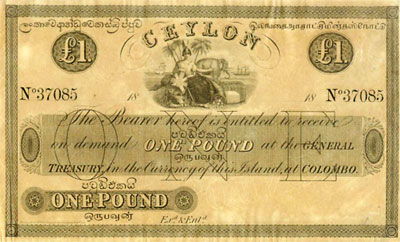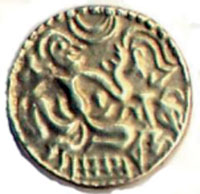National Trust lecture: Language on coins and bank notes of Lanka
View(s):“Language on Coins & Bank Notes of Lanka”, the National Trust lecture on June 27 will be delivered by Dr. Kavan Ratnatunga, President of the Sri Lanka Numismatic Society. Coins and bank notes of Lanka record the long history of language over a period longer than two millennia, and reflect the politics of the island.
Most of the indigenous coins of ancient Lanka had only symbols. The classic multi-symbol coin known as the Elephant and Swastika maybe a commemorative issue for the visit of MahindaThera, as the symbols are interpreted as events in the life of the Buddha. The rare lion and swastika lead coin has Brahmi text along the periphery around the railed swastika. This symbol which is seen cut at the commencement of stone inscriptions by Lankan kings, is recognised as the Royal standard of the early Anuradhapura era.
During this era foreign coins with Greek and Roman text came into the island in external trade, and many have been found in excavations. They probably did not circulate internally.

DevaNagari text Sri lakviha appears on the 8th century gold kahavanucoin. The coins of RajaRajaChola replaced lakviha with RajaRaja. After Lanka was liberated in 1070 we find coins in the names of VijayaBahu, ParakramaBahu, Nisankamalla, Sahasamalla, Lilavati, Dharmasokadeva, Buvanekabahu. Most of the coins of latter monarchs are minted in copper. Large numbers of these coins know as massa are found in hoards.
Many copper cash coins from the Chinese Northern and Southern Sung dynasties of 11th to 13th centuries have also been found on the island in large hoards. These coins may have circulated with the massa coins.
The 15th century Setumassa are the first Lankan coins with Tamil text. They were issued by the AryaChakravartis in Jaffna between 1462 and 1597. These copper coins have the Standing Monarch characteristic of most medieval Lankan coins. In this coin the word Setu appears below the Nandi bull couchant facing left.
Sinhala text first appeared on a rare Tin-lead akacoin with the date 1747. The coin was to be pierced with a hole for the purpose of stringing. According to Codrington they were minted to relieve a shortage of duits for arecanut trade with the Kandyans. This may explain the Sinhala Text. This coin is extremely rare and I have seen one only in the British Museum collection.
Dutch coins had the VOC (Verenigde Oostindische Compagnie) monogram of the Dutch East India Company. These crude thick Copper Dump coins were minted locally between 1783 and 1795 in Colombo, Trincomalee, Galle and Jaffna. Colombo (C) had STUIVER and Trincomalee (T) had ST. The Galle (G) had value in Sinhala text and the Jaffna (I) had Tamil text.

Lanka’s first currency note was issued in 1785, which was in Rix Dollars and called Kredit Brieven and paid 3 % Interest. It had text in Dutch, Sinhala and Tamil.
This Dutch liability was taken over by the British in 1796. Early British coins had a standing Elephant facing left with CEYLON GOVERNMENT. The locally minted copper dump coins from 1801 to 1816 had value as a fraction of a Rix Dollar (48 Stivers), and the Silver Dump coins minted from 1803 to 1809 had value in Stivers. Very iconic is the Silver Rix Dollar coin of 1821 with George IV. All these coins had text only in English.
Currency was issued by Ceylon Government Treasurer in Rix Dollars till 1825. The logo was Britannia. From 1827 currency notes were issued in Pounds Sterling. The text was in English but the value was also given in Sinhala and Tamil. The trilingual value has been maintained on all coins and currency notes issued in Lanka from 1827 to present.
Stamps issued from 1857 to 1947 had text only in English. From 1948 to 1972 it had Ceylon, Sri Lanka in Sinhala and Ilankai in Tamil. In 1956 the currency notes interchanged English text to Sinhala. Only the value appears in English and Tamil. The portrait of Queen Elizabeth II was replaced with the Ceylon Armorial ensign.
When that was used on regular coins from 1963 to 1971, the name of the country only in Sinhala was Lanka, although commemorative coins used Sri Lanka. In 1972 the coins got Sri Lanka in Sinhala, but the name of the bank in English on the Currency notes remained as Central Bank of Ceylon till 1985.
More details of these and other coins can be found on the author’s website: http://coins.lakdiva.org.
The National Trust lecture will be held at the HNB Towers auditorium, 22nd Floor, 479, T.B. JayahMawatha, Colombo 10 at 6.30 p.m. on Thursday, June 27. The lecture is open to members and to the public at a nominal fee. Further information could be obtained from the Trust Office at the PGIAr, 407, BauddhalokaMawatha, Colombo 7. Tel: 0112682730.
Follow @timesonlinelk


